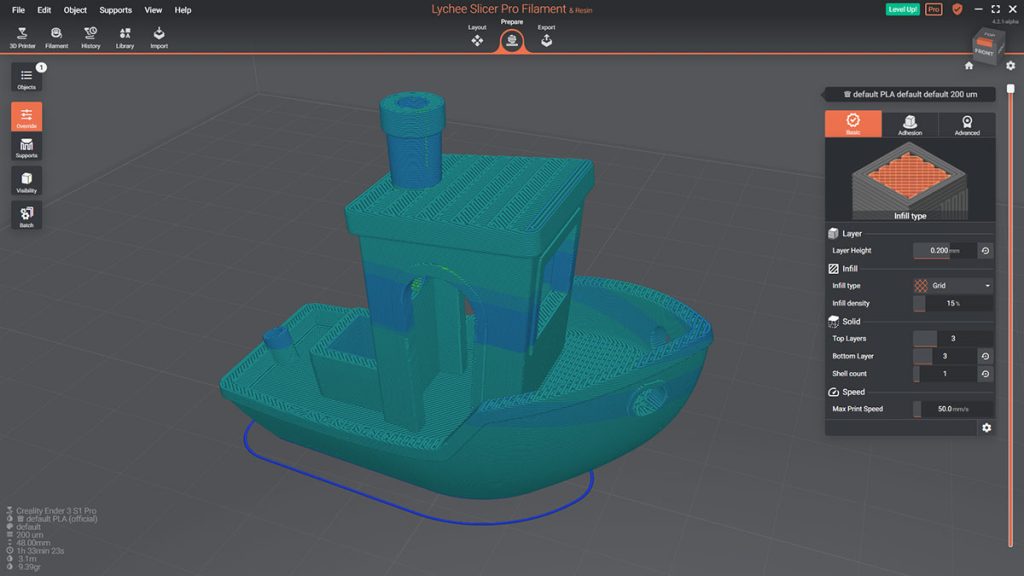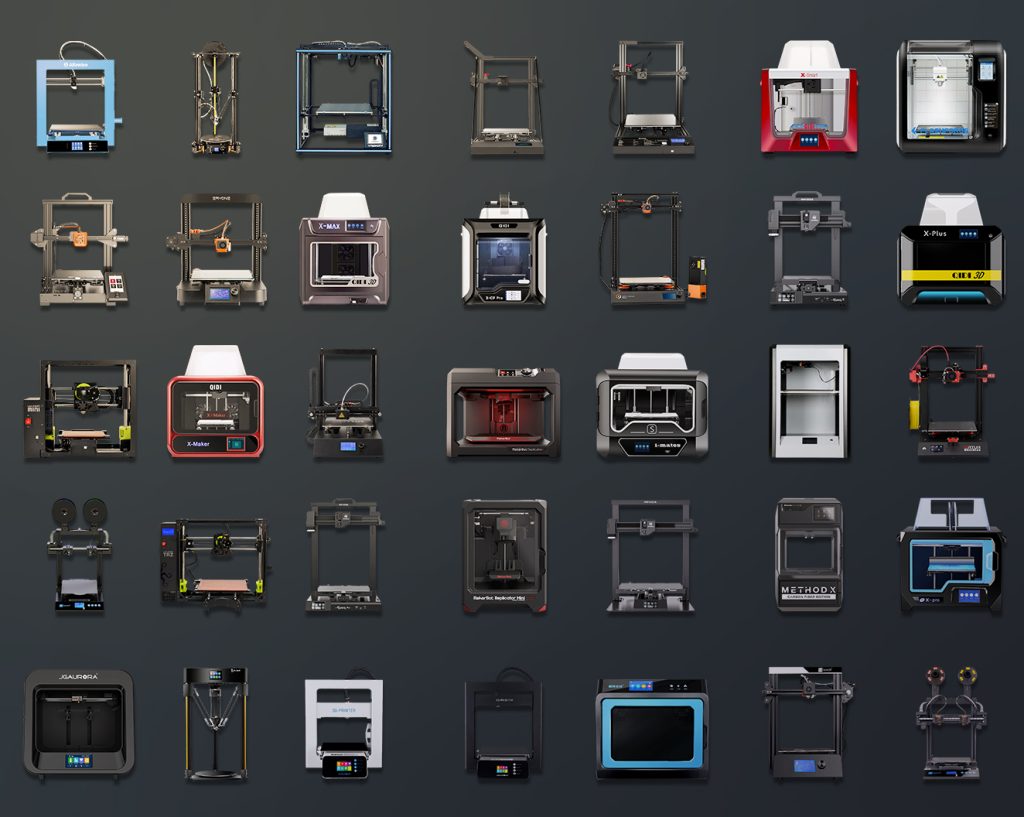Watch the 2022 3D Printing Industry Awards Live on Tuesday 13th December: subscribe and enable notifications.
3D printing software developer Mango 3D has launched an update for its Lychee print preparation program that makes it compatible with Fused Filament Fabrication (FFF).
Traditionally a slicer for resin 3D printing, Lychee now enables users to seamlessly prepare files for production with this technology and FFF on the same platform. Launched as a public beta, Mango 3D’s expanded software effectively sees it go toe-to-toe with Prusa and Ultimaker, respectively developers of the PrusaSlicer and Cura slicers.

Mango 3D’s Lychee model slicer
Working from its base in the French commune of Mérignac, Mango 3D’s team of developers and engineers has established a portfolio of proprietary materials and launched a versatile slicing software. Known as Lychee, the latter is designed to help users prepare models for 3D printing via its support generation, part orientation, and preview functionalities.
As well as enabling easy and precise model slicing, the software allows for real-time hollowing, island detection, and suction cup detection while offering users batch production tools. Thanks to its ‘Magic Menu’ functionality, adopters can also automate the preparation of their models. This could take the form of automating print orientation or the program adding rafts to builds to ensure printability.
According to Mango 3D, its ‘continuous development cycle’ allows for the ongoing addition of features that “answer the needs of all users,” and functions specific to given industries. By continually doing so, the company says it has now built a slicer that “fits all types of users,” whether they be 3D printing models, jewelry, dental applications, or product prototyping parts.
Through broadening the compatibility of its software, Mango 3D has sought to get it into the hands of as many users as possible, and it is supported by the resin machines of Anycubic, Elegoo, Phrozen, Creality, and more. Now, with its latest update, the firm has sought to further widen Lychee’s appeal by providing it with FFF 3D model slicing functionality.

Lychee’s new FFF functionality
Mango 3D’s beta filament slicing features are designed to help those just getting started in the world of 3D printing optimize their results without needing to acquire in-depth knowledge of the technology. That said, the program does include some more advanced features for experienced users, which allow for tighter control over a system’s parameters.
In practice, Lychee now allows FFF users to choose between setting up a ‘Master Profile’ or using the ‘Override Settings’ option. This enables makers and manufacturers only to input their favored settings once, but leaves the door open to modifying these to meet the demands of a specific project when needed.
The FFF version of Lychee also carries over its ‘Banana for Scale’ mode from its resin-led counterpart, which makes it easier for users to weigh up the size of a part. However, to take advantage of a ‘Physical Scale’ mode that displays objects on-screen at the exact same size they’ll be printed, adopters will have to switch to the Pro version.
With the software featuring the same UI as before, and supporting over 480 FFF machines, Mango 3D is marketing it as an “all-in-one solution” for 3D printer users. If resin machine owners were to turn to FFF, the firm says they would no longer need to change their working habits, while filament system users can just as easily start using Lychee, before adopting an SLA/DLP 3D printer.

What other slicers are out there?
Mango 3D’s joint resin and filament-slicing software is fairly unique in the 3D printing space, but it still faces stiff opposition from programs developed by others in the industry. With its PrusaSlicer software, for instance, Prusa continues to offer its free, open-source 3D slicer, which, just like Lychee, is compatible with both FFF and resin-based 3D printers.
In the resin 3D printing space, Lychee also faces stiff competition from CBD-Tech’s ChiTuBox third-party 3D slicer. Unlike Mango 3D, CBD-Tech markets hardware as well. While the company’s offering is led by parts rather than entire systems that can be store-bought, it has more than one horse in the 3D printing race.
On the FFF side of things, meanwhile, many users turn to Ultimaker’s Cura software for the slicing of their 3D models. Ultimaker also has a hardware side to its business, albeit a much larger one than CBD-Tech or Mango 3D. As such, if the latter is to make inroads into the FFF space, Ultimaker’s probably one of those most likely to take a hit on system demand.
To stay up to date with the latest 3D printing news, don’t forget to subscribe to the 3D Printing Industry newsletter or follow us on Twitter or liking our page on Facebook.
While you’re here, why not subscribe to our Youtube channel? featuring discussion, debriefs, video shorts and webinar replays.
Are you looking for a job in the additive manufacturing industry? Visit 3D Printing Jobs for a selection of roles in the industry.
Featured image shows a graphic indicating the resin and filament 3D printing compatibility of the Lychee slicer. Image via Mango 3D.


